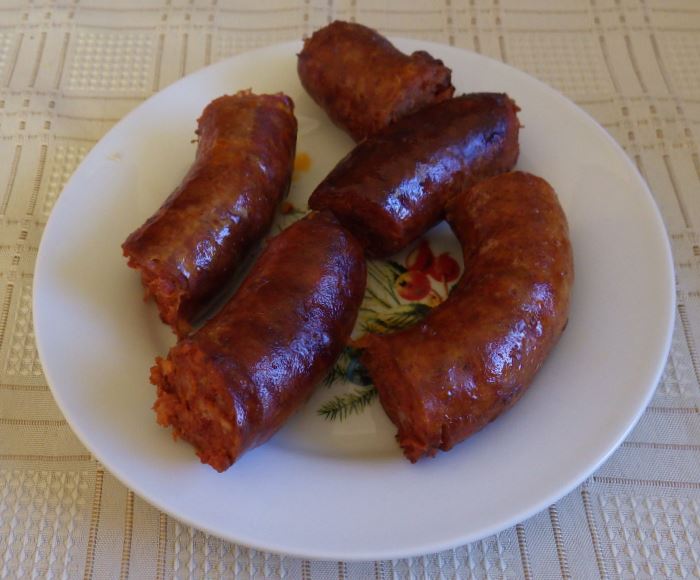Hungarian sausages are typically spicy and fatty. The fresh ones are eaten fried and they sort of resemble Italian sausages, but with a lot stronger flavour.
Smoked Hungarian sausages are kind of like dry salami, but they can be eaten even just fresh from the smoke and don’t really need as much ageing as a typical salami does.
The recipe varies depending on the which part of Hungary they come from (and similar sausages are made in some other countries, such as Romania and Slovakia) but they usually start with ground pork with a hefty portion of fat in it. Traditionally the sausage meat was cut into small pieces, not really ground up, but it is unusual these days do do so.
For example a recipe for a type of Hungarian sausage from the south eastern part of Hungary (Csabai kolbász) would be some variation of this:
Take 10 kilograms of pork, 30% of which should be bacon.
Spread it on a table in an layer about 100 millimeters thick, and add 30-50 grams of finely chopped garlic, 200-220 grams of salt, 200-250 grams of paprika (some of which can be hot, according to taste), and about 20-30 grams of whole caraway seed.
Mix the ingredients by hand and then fill it into sausage casings (traditionally cleaned pig intestines).
It is important that the sausage casings should be filled completely, without air bubbles, as pork fat oxidises readily if exposed to air, and goes rancid, because of its high unsaturated fat content.
If the sausages are eaten fresh they are usually fried in lard and eaten warm.
Otherwise Hungarian sausages are typically smoked and then kept in a cool dry place — if stored properly they can last for about a year, even if they are not stored inside a fridge.
Hungarian sausages do not necessarily require ageing and can be eaten even fresh off the smoker — although it is a matter of taste. Over time they do age and take on a different flavour.
They can be eaten raw as they are, or used in various cooked dishes to provide a spicy, smoky flavor.
I do like the taste of smoked sausages so long as they are smoked naturally. I cannot stand the taste of meat that was treated with fake smoke flavor instead of actually smoking it — a process that is unfortunately way too common in North America. Fortunately such processes are typically not used in the production of Hungarian sausages.




